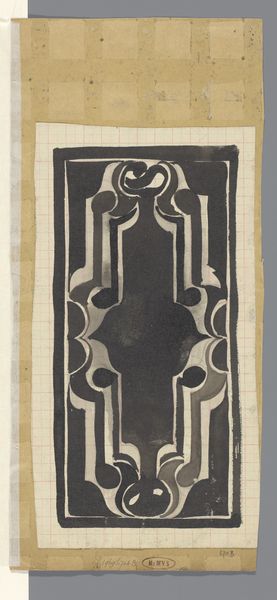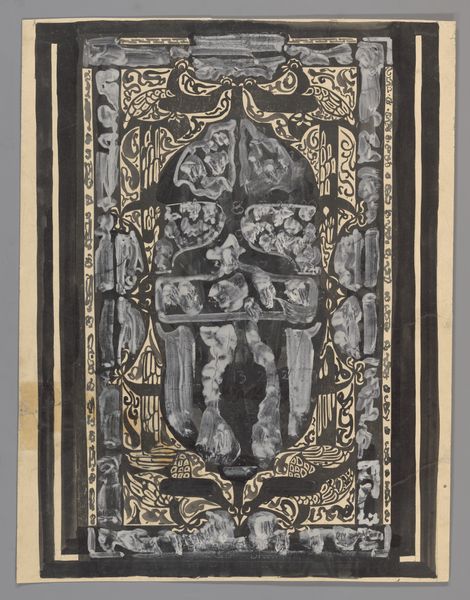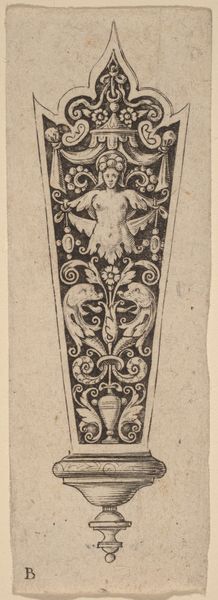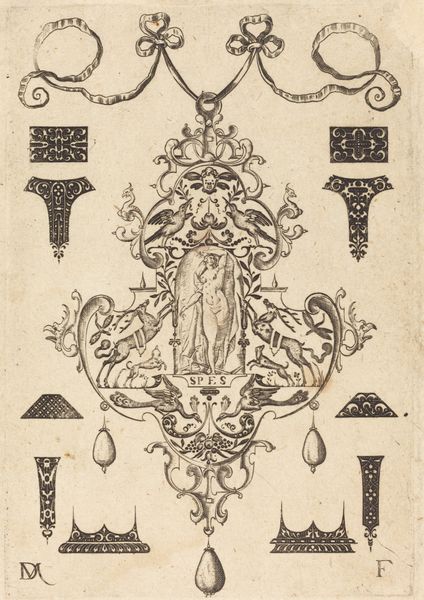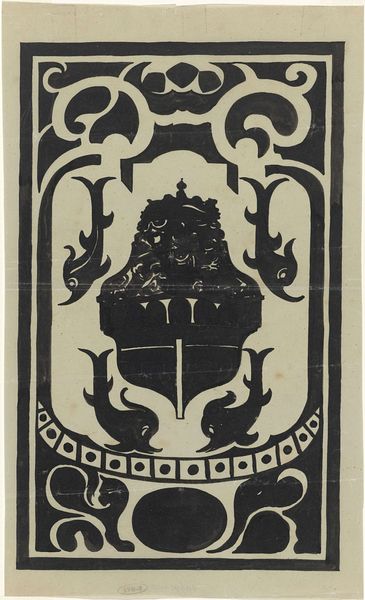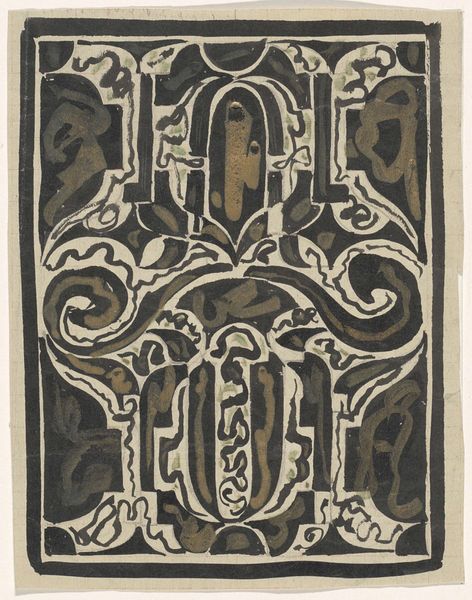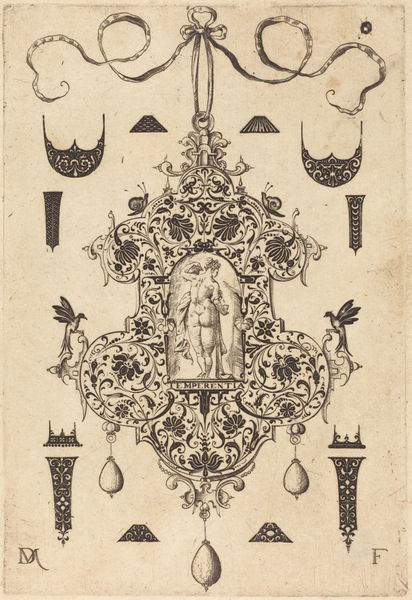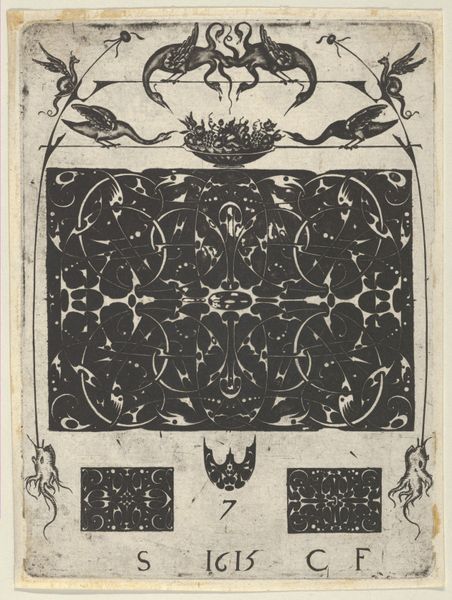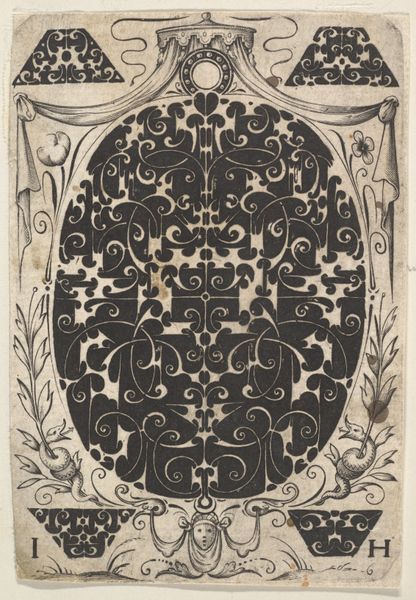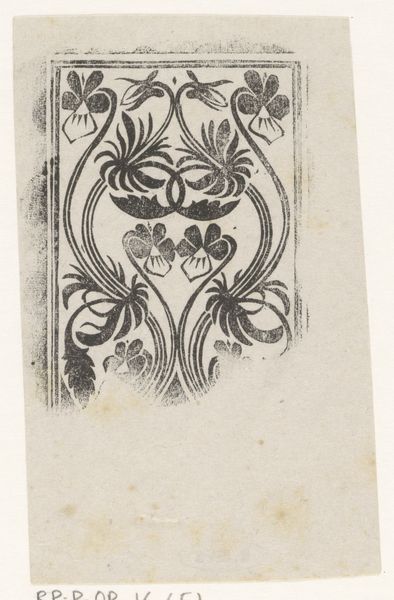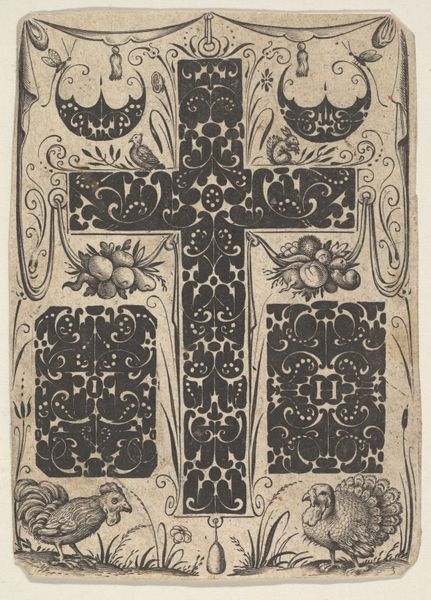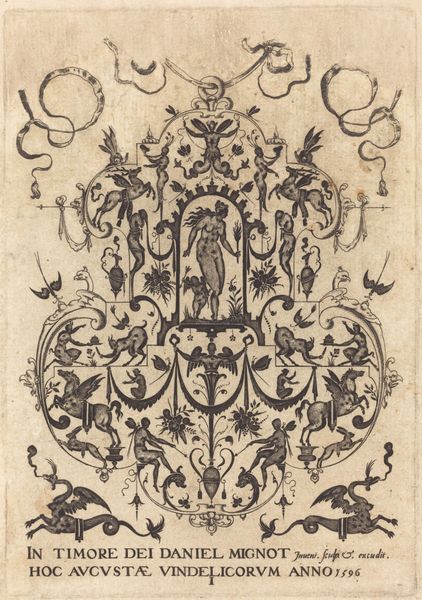
drawing, graphic-art, paper, ink, frottage
#
drawing
#
graphic-art
#
art-nouveau
#
figuration
#
paper
#
ink
#
linocut print
#
geometric
#
line
#
frottage
Dimensions: height 476 mm, width 336 mm
Copyright: Rijks Museum: Open Domain
Editor: Here we have “Ontwerp voor een tegeltableau met leeuwen”, or Design for a Tile Panel with Lions, created sometime between 1874 and 1945. It’s ink on paper and held at the Rijksmuseum. It’s very striking - so graphic! What is your read on this piece? Curator: Well, immediately I think about the sociopolitical context in which it was produced. The lion, of course, is a symbol of power, often associated with royalty and national identity. Given the date range, it’s important to consider how nationalistic sentiments might be playing out here. Who would display such a tile panel? What message are they trying to convey? Editor: That's interesting, I hadn't considered that. So, beyond the symbolism of the lion, how might the style—this feels very Art Nouveau—factor into its public role? Curator: Art Nouveau, with its emphasis on flowing lines and natural forms, was often associated with modernity and progress. However, it also served as a form of national branding. Think of the Glasgow School in Scotland. Was the client commissioning something that was specifically and identifiably Dutch? Also, consider that this is a *design*. This imagery had to fit the technological capabilities of the ceramic industry. Editor: So it is less about the artistic expression itself, and more about how art serves larger cultural or even national purposes. Curator: Exactly. The design choices, the subject matter—all of these things were made with a specific audience and a specific context in mind. The reception of the tile panel in a home versus a business would say something interesting about how art functions as a tool for asserting a position of prestige or wealth. What do you take away from understanding all these contextual layers? Editor: Thinking about this as a tool for power broadens my perspective, and reminds me that art is always part of a larger conversation. It's never truly isolated. Curator: Indeed, and hopefully now the image will stimulate fresh and informed insights from future listeners.
Comments
No comments
Be the first to comment and join the conversation on the ultimate creative platform.
